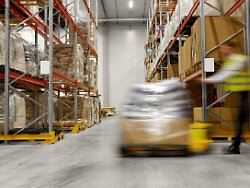Monday, December 13, 2021
Strongest increase since 1962
Prices in German wholesale are exploding
Wholesaling is the hinge between manufacturers and customers. The trend for the development of prices in November doesn’t bode well: The inflation rate is 16.6 percent higher than in the previous year and thus reached a record level.
The sales prices in German wholesalers rose more sharply than ever in November due to expensive raw materials and intermediate products. They were 16.6 percent higher than a year earlier, according to the Federal Statistical Office. This is the strongest increase since data collection began in 1962. This means that prices have accelerated again significantly: In October the rate of price increases was 15.2 percent and in September it was 13.2 percent.
The development is considered an indicator of future inflationary trends, as wholesaling represents the hinge between manufacturers and end customers. At 5.2 percent, the inflation rate is currently higher than it has been in almost 30 years. In their annual report for the federal government, the economic wise men expect an average inflation rate of 3.1 percent for the year to come. It is expected to fall to 2.6 percent in 2022.
In November, petroleum products were once again among the strongest price drivers in wholesale. They cost an average of 62.4 percent more than a year earlier, as the statisticians determined. Old materials and residual materials even went up by 77.4 percent, ores, metals and metal intermediate products by 60.3 percent. The prices for raw and sawn timber (plus 41.1 percent) as well as for grain, raw tobacco, seeds and animal feed (plus 30.3 percent) have also risen considerably.
Due to the rapid recovery of the world economy from the Corona recession, the prices for many products are currently rising rapidly. The world’s largest economies, the USA and China, are growing particularly strongly this year, especially since major economic stimulus programs have been launched there. This leads to global bottlenecks that lead to rising prices. In addition, there are disrupted supply chains, for example due to corona outbreaks in China, where the authorities have closed entire factories and ports because of a single discovered case.
